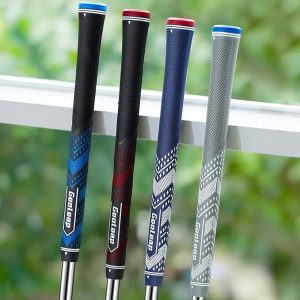Golf Club Distance Chart Secret
The Secret to Lower Scores
Whether you’re a weekend warrior looking to shave a few strokes off your game, or a seasoned player fine tuning your precision, understanding golf club distances is a game changer. I’m talking the nitty gritty from the factors that affect how far you hit each club, to a comprehensive breakdown of average distances, to tips for taking your distance game to the next level. Trust me, a little knowledge in this department can work wonders for your performance on the links.
The Factors That Influence Golf Club Distances?
To start things off, let’s talk about what influences those all important yardages. It’s not as straightforward as you might think. Swing speed, loft angles, weather conditions they all play a role. And then there’s that tricky little concept called “smash factor,” which is all about how efficiently you’re transferring energy from the club to the ball. Nail that, and you’re on your way to some serious distance.
Average Distances for Each Club
Now, let’s dive into the nitty gritty. We’re talking drivers pushing 290 yards, fairway woods going 250, hybrids reaching 220, and irons stretching from 210 down to 120. And don’t even get me started on those wedges they’ve got a whole range of specialty distances, from 140 yards on down to just 60. It’s a lot to keep track of, I know. Below I have attached a cheat sheet for helping you start having a more accrete club distance gauge but first you need to know what factors can play a huge influence in your golf club distances and what types of things you can control.

What Factors Influence Golf Club Distances?
Several factors that play a big role in controlling golf club distances for new or seasoned players:
Swing Speed
-Faster and harder swings generate more power, leading to greater distances and less control.
Club Loft
– The angle of the clubface impacts the Path and distance of the ball.
Quality of Contact
– Clean, solid contact with the ball results in more distance with more control.
Weather Conditions
– Wind, temperature, and humidity can all affect ball flight.
Ball Type
– Different golf balls are designed for varying levels of distance and control.
A short sum up of how to control the factors that suck the life out of your shots in a real life example:
Real life factor
Problem: So your going to play on a course that’s going to have a lot of wind while your there.
Solution: Select the correct ball to minimize ball spin and hit with a lower and flatter trajectory to help achieve max distance and control.

The Power of Knowing Your Distances
But here’s the thing of once you start to understand your personal averages for each club, your decision making on the course becomes so much sharper. No more guessing games, just confident club selection based on the conditions and the yardage. Trust me you’ll start shaving off strokes fast.
Tips for Maximizing Your Distances
Of course, maximizing your distances doesn’t happen overnight. It takes regular practice, dialing in your equipment, and even a little physical fitness. But the payoff is huge. Imagine the look on your buddies’ faces when you pull off that 250 yards with a 3 wood or stick it close with a pinpoint 150 yard with a 7 iron. Golf’s all about the small victories, and distance control is one of the keys to unlocking them.

Detailed List By Each Club And Purpose
Driver
- Average Distance: 230-290 yards
- Purpose: Longest shots off the tee
Woods (3-wood, 5-wood)
- 3-wood: 210-250 yards
- 5-wood: 190-230 yards
- Purpose: Long shots from the fairway or off the tee for more control
Hybrids (2-hybrid, 3-hybrid, 4-hybrid)
- 2-hybrid: 190-220 yards
- 3-hybrid: 180-210 yards
- 4-hybrid: 170-200 yards
- Purpose: Versatile clubs for a variety of lies, bridging the gap between woods and irons
Irons (3-iron to 9-iron)
- 3-iron: 180-210 yards
- 4-iron: 170-200 yards
- 5-iron: 160-190 yards
- 6-iron: 150-180 yards
- 7-iron: 140-170 yards
- 8-iron: 130-160 yards
- 9-iron: 120-150 yards
- Purpose: Precision shots, approach shots to the green
Wedges (Pitching, Gap, Sand, Lob)
- Pitching Wedge: 110-140 yards
- Gap Wedge: 90-120 yards
- Sand Wedge: 80-110 yards
- Lob Wedge: 60-100 yards
- Purpose: Short approach shots, bunker shots, and chips around the green
Putter
- Purpose: Used on the green to roll the ball into the hole
Recap
Whether you’re a newbie or a seasoned vet, use this knowledge to up your game, outsmart the course, by using the right club, ball for the conditions and have even more fun out there. After all, the perfect club for the perfect shot is what it’s all about.
Thoughts for Gaining extra yardage in your game
- Club Fitting – Get fitted for clubs that match your swing style or for your helping in your journey.
- Swing Analysis – Use technology such as launch monitors to analyze and improve your swing.
- Ball Choices – Not all golf balls are a like. Pick the right ball for the condition.
- Course Management – Learn the course and use average distances for proper layout.




